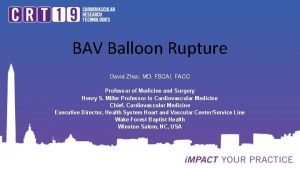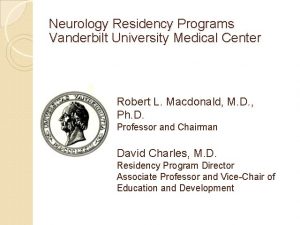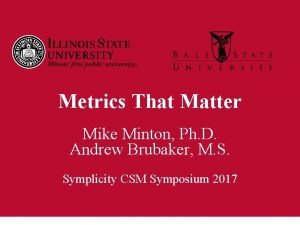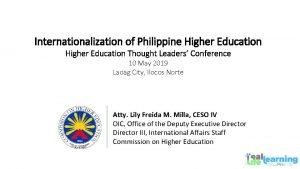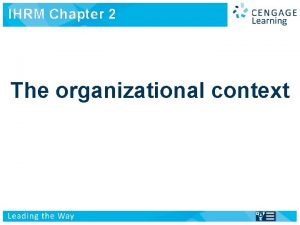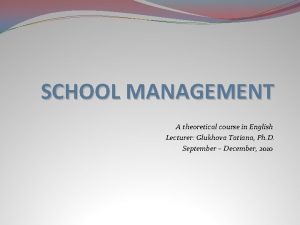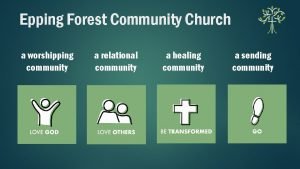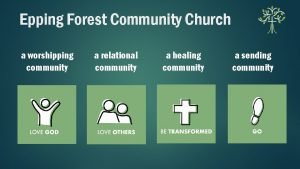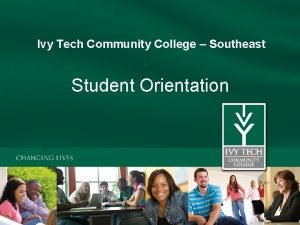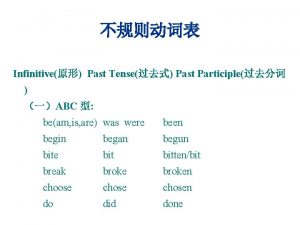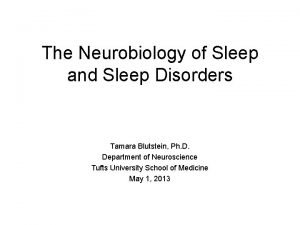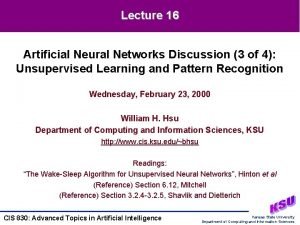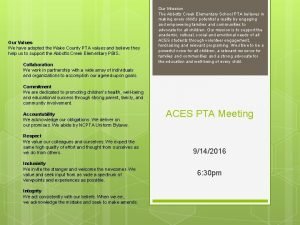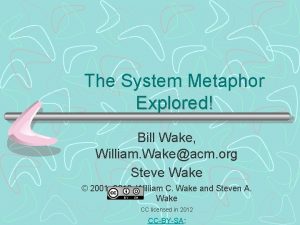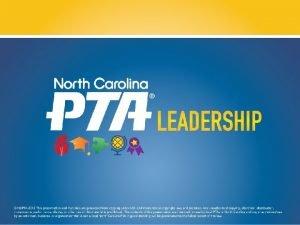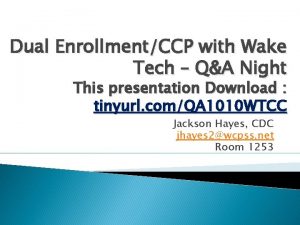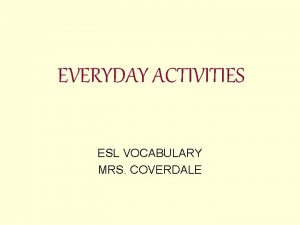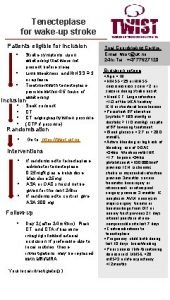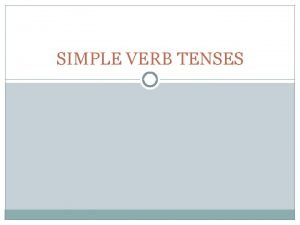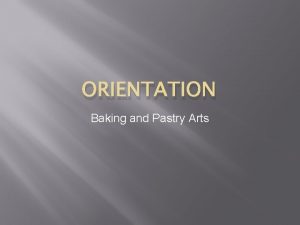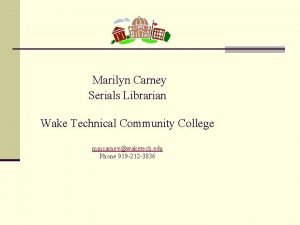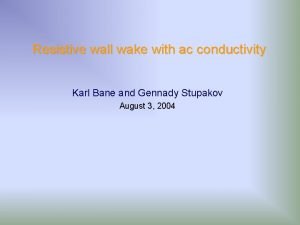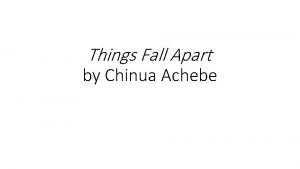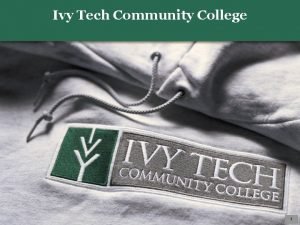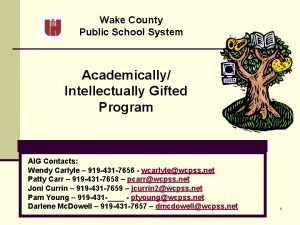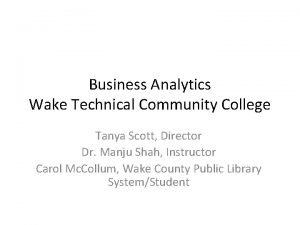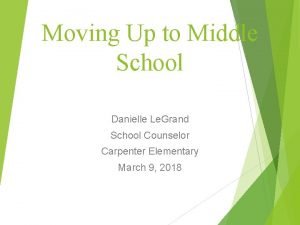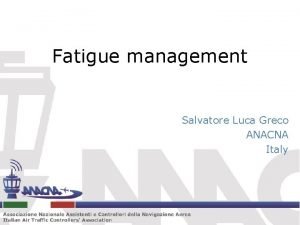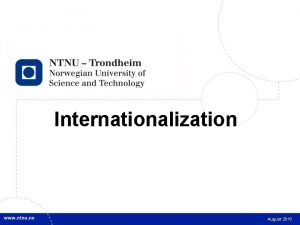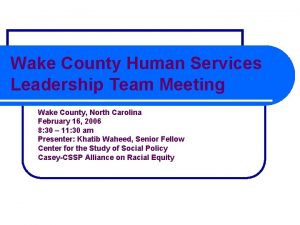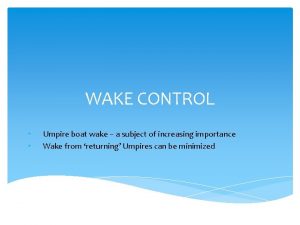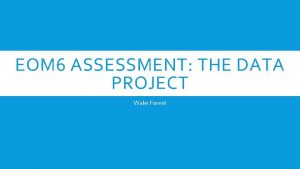The Internationalization of the Wake Forest Community Transcending



































































- Slides: 67

The Internationalization of the Wake Forest Community: Transcending Campus Spaces by Transforming the Institution Kelia Hubbard– International Students and Scholars Division/GPS Sandra Lisle Mc. Mullen– Global Campus Programs Division/GPS Jonathan Smart – Department of English/GPS José Villalba – Office of the Dean of the College

Specific Aims for the Day • To provide Participants with • (1) An understanding of the legal challenges for international students in gaining and sustaining admission to the U. S. • (2) An increase in knowledge and self-awareness of the social and cultural barriers experienced by international students in the US and at Wake • (3) Analyzing the intersection of both points above, and the impacts on the learning environment and the student/teacher relationship

Today’s Structure • Overview of International Students at Wake Forest University from 2011 -present • “A Primer on International Students and the Arrival Process” • “Experiences of International Students at Wake and International Student Services” • “International Students in the Classroom and Educational Settings” • Dedicated Question and Answer session

Let’s Gauge the Room • To what extent do you interact with International Students? • In what capacity do you interact with International Students? • Based on what you’ve heard from International Students, what are some of their experiences at Wake? • What brought you to this workshop today?

Changing of the Quads Fall 2011 • Total: 289 • UDG: 100 • Grad: 143 • BG Camp: 46 • Countries: 55 Fall 2016 • Total: 661 • UDG: 423 • Grad: 206 • BG Camp: 32 • Countries: 62 • Percent Growth over 5 years: • Total: 129% • UDG: 323% • Grad: 26%

National Trends for International Students • What are your colleagues elsewhere saying? • In 2011 there were roughly 700, 000 international students in the U. S. • In 2016, there were over 1, 000 • There was a 7% increase between ‘ 15 &’ 16 • Top 5 places of origin • China (32%); India (16%); S. Korea (6%); Saudi Arabia (6%); Canada (3%) • About 425 K are UGR; about 390 K are GRD • About 2/3 rd are funded personally/family • *Institute of International Education: iie. org

So Why “Now” for this Session? • If the statistics of the previous slide weren’t enough, consider the current climate • More and more international students are voicing concerns over being “isolated” • Some come from volatile national economies which impact their stability • U. S. students often find it difficult to “include” international students • The trend data suggests that even if #s were to go “down, ” it won’t be a drastic change • Very recent data shows 4 in 10 schools saw drop

General Resources • http: //www. iie. org/Research-and. Publications/Open-Doors/Data/International. Students#. WL 7 Bzf. LCJS 0 • https: //qz. com/31376/40 -of-foreign-studentsin-the-us-have-no-close-friends-on-campusthe-culture-shock-of-loneliness/ • http: //www. nafsa. org/About_Us/

A Primer On International Students and the Arrival Process

Global Programs and Studies (GPS) Kline Harrison Associate Provost for Global Affairs David Taylor Director of Global Abroad Leigh Stanfield Director of Global Campus Programs Michelle Klosterman Director of Global Academic Development Nelson Brunsting Director of Global Research and Assessment Kelia Hubbard Director of International Students and Scholars (ISS)

International Students and Scholars (ISS) • Kelia Hubbard – Director • Blair Bocook – Assistant Director (starting 3/27) • Carrie O’Brien – International Student Advisor • Tara Grischow – International Student Advisor • iss@wfu. edu • global. wfu. edu/iss • Global Gazette – monthly newsletter

What is the Role of ISS? • ISS provides immigration advise and support for all international students, faculty and staff sponsored by Wake Forest University. • ISS monitors compliance with immigration regulations for both the Reynolda and Health Sciences campuses. • ISS provides opportunities for cultural programming and acclimation to life in the U. S.

How Do International Students Get Here?

TOEFL • All international students must prove that they have a certain level of English proficiency in order to be admitted and issued an I-20.

Admission Letter and Financial Certification • Prior to issuing the I-20 the P/DSO must confirm that the student has met all admissions requirements per the universities admission policies. The admissions letter is also needed as a part of the visa application. • The P/DSO must confirm the student has the financial capacity to attend the university in which they have been admitted, prior to issuing the I-20.

Passport • ISS will ask for a copy of the passport to confirm identity, date of birth and correct spelling of name.

Certificate of Eligibility for Nonimmigrant Student Status (I-20) • Document issued from the SEVIS system. • Maintained by ISS throughout the student’s F-1 status. • Required for the student to apply for the F-1 visa.

I-901 Fee • $200 fee to support the maintenance and monitoring of the Student and Exchange Visitor Program. • Student must provide proof of payment of this fee at the time of their visa appointment.

Visa • Document issued by the Department of State during the visa appointment that allows the student to enter the U. S. and request F-1 status. • Visa application fee is $160. • What is the most common reason for a denial of the F-1 visa?

How many of You Subject to Administrative Processing? • Extra background check requested by the consular official. • File is sent to Washington D. C. for review • Can take 3 -6 months or more to clear.

Flight and Airport Arrival • In the airport students will be checked by Customs and Border Protection (CBP). • Students may be pulled into “secondary inspection” which involves an in-depth look into the students immigration documents and purpose for entering the U. S. Secondary inspection can take 2 -6 hours to clear.

I-94 • Record of the student’s arrival, status and length of stay as granted by the Customs and Border Protection (CBP). • ISS assist with correction of errors on I-94.

Social Security Number (SSN) • • International students are only eligible for a SSN if they have employment inside the U. S. and a letter/authorization from ISS. Many international students will not receive a SSN until they graduate if they work in the U. S.

Employment Authorization Document (EAD) • Issued by USCIS to provide work authorization for a specific amount of time. • For an approved OPT • • $410 fee 90 day processing time

How Did You Do? 1. TOEFL 2. Admission letter 3. Bank Statement 4. Passport 5. I-20 6. I-901 fee 7. Visa – possible administrative processing 8. Flight 9. I-94 10. SSN 11. EAD

What Does ISS Do?

Status Maintenance and University Compliance • • SEVIS Alerts SEVIS Registration – all students each semester Report Status Violations Recertification Twice yearly meeting with field representative Required file maintenance Enrollment reporting • • • Change of major Change of level Address updates CPT OPT/STEM Program extensions Program shortens Travel signatures Limited personal counseling Crisis management SEVIS alerts

Communication and Programming • • Monthly newsletter Friendship family Winter break housing Fall break trips Tax workshops Launch career readiness program Student organization support Campus involvement opportunities • • • Drivers license assistance SSN assistance Regulatory changes Program end date alerts Travel reminders Resource referrals – LAC, Counseling Center, Student Health, OAA

ABCs of Visa Classifications Visa Class Description A Foreign Diplomat NATO Personnel B Visitor for Business/Tourist O Extraordinary Ability (ex. Athlete) C Aliens in Transit P Group of int’l athletes, artist D Alien Crewman Q Int’l Cultural Exchange E Treaty Investor/Worker R Religious worker F Student S Alien Witnesses G Rep. of Int’l Org & Staff T Victims of trafficking H Special Occupation U Victims of certain crimes I Foreign Int’l Media V Dependents of PRs J Exchange Visitor Refugees Fear of Persecution K Fiancé of U. S. Citizen TPS Temporary Protected Status L Intracompany transfer M Vocational student DACA Deferred Action

(Official) BREAK TIME!

Experiences of International Students at Wake and


Student A Student B Student C

LOGISTICAL CHALLENGES: • Gmail/internet access • Arrival • Food • Health • Finances • Driver’s License / Car • Thanksgiving/Spring Breaks • Winter Break • Summer storage

FROM THE STUDENTS

Greatest Concern: How to meet/talk to Americans


History of WFU International Student Orientation • Before 2013 • 2014 to present

CARE & Compassion • Academic Struggles • Social Struggles • Family issues • Depression/Mental Health

International Students & Scholars Services • Oversee non-immigrant visa status: • Compliance • Employment • Educate campus community about working with/serving international students and scholars • Help students navigate new environment by: • creating and connecting students with programming • connecting students with resources • not pushing or demanding any particular level of engagement

International Students in the Classroom and Educational Settings

Agenda 1. Overview of ESL learners at Wake 2. Tips for classrooms

Second language learners at Wake Predominantly from mainland China. Diverse educational experiences: 1. Traditional “international” students 2. US or English-medium schools (international high schools, IB schools, etc. ) 3. Generation 1. 5 students and “third-culture kids”

How do we encourage in-class participation? ESL Learners may be less successful in class because they…. • are less likely to volunteer answers • don’t speak up in group work or form groups with other international students • struggle to understand readings and writing assignments • don’t share cultural background/assumptions

Educational International students may havebackgrounds educationalof our learners backgrounds where: • Classroom participation is minimal • Learning is very teacher-centered. • Focus is on memorizing and learning without discussing, responding, or commenting. • Interactive learning not prioritized

Which skills are most important for international students? 1. Critical thinking 2. Understanding lectures 3. Synthesizing information 4. Asking questions 5. Taking notes 6. Time/task management 7. Reading textbooks 8. Speaking Clearly 9. Class discussions 10. Group discussions/activities (Caplan & Stevens, 2017)

Classroom tips by skill area: 1. Speaking 2. Listening 3. Reading 4. Writing 5. Assessment Language skills

Speaking: Activating background knowledge Help students prepare for discussions by: • Pre-teaching necessary background information • Having students to reflect on similar experiences or related topics. • Asking students to share their thoughts on general topics before focusing on particulars

Speaking: Volunteering answers Calling on students in class: • Give students ample time to prepare their ideas. • Asking the class to write out their answers before responding.

Speaking: Think - Pair - Share (oldie-but-goodie) 1. Think - students individually reflect on a question/problem 2. Pair - students share/compare their answer with a partner 3. Share - pairs share their ideas with a larger group or class

Speaking: Collaborative tasks • Having groups of students work together to address a problem or complete a task can help make use of diverse skill sets and motivate participation. • Collaborative writing via Google Docs: • Whole class collaborates on a bibliography or glossary. • Small groups create a presentation together.

Speaking: Class rapport • Help students gain confidence in speaking in front of their native-speaking classmates early in the term. • If a presentation is part of the class grade, have frequent, low-stakes chances for students to speak to class/groups.

Listening Processing spoken academic language is a challenge for ESL learners. • Spoken academic language is less common in EFL materials • Novel academic vocabulary • High-stakes content in a fleeting, temporary context

Listening: Teacher & Student Talk • Use clear, normal speech. Repeat and rephrase as necessary. To monitor comprehension, encourage interaction in your lectures. • When a student raises a question or makes a brief comment, it can be helpful for the instructor to paraphrase the question for the class.

Listening: Visual support • Visual support for lectures or presentations is vital for language learners. • Highlight keywords and key concepts • Discuss with your students their practices for note-taking (Do you want them to write down everything? Will you send them your slides? ) • Turn on English subtitles for video.

Listening: Comprehension Checks • Use comprehension checks at regular intervals. • Comprehension checks should not single-out ESL learners • Ask meaningful questions that focus on summarizing ideas, providing examples, or drawing connections between ideas.

Listening: Cultural references • Cultural references can challenge comprehension. • International students may feel excluded from discussions. • Using cultural references as primary examples or analogies may be difficult for these students (and may take the class off-topic).

Listening outside of class • ESL students are often under-prepared for service encounters in academic (i. e. , outside of the classroom). • Office hours, in particular, can be culturally specific. • What do you use office hours for? How can we help normalize the idea of office hours for international students?

Reading • Second language reading is a cognitively demanding task • Vocabulary (90% necessary for understanding) • Reading speed and fluency lower • Comprehension for longer, more complex texts is particularly difficult.

Reading: Support for Reading • Students need to comprehend before analyzing/ discussing texts • Comprehension questions can help guide students to gain a better understanding of a text • Graphic organizers and summary tasks can also help students with reading comprehension

Writing • Cooperative/collaborative writing tasks help ESL learners engage with materials and see peers’ language use. • Low-stakes writing tasks with peer audiences can help ESL learners focus on fluency over accuracy.

Writing: Teacher feedback • Frequent, interactive, and explicitly • Do not directly provide correct answers, but direct their self -correction. • Prioritize feedback based on course/assignment goals. • What matters? Comprehensibility vs Accuracy?

Metalinguistic Awareness • Most ESL learners are fairly knowledgeable about English grammar. They feel comfortable identifying the parts of speech and parts of a sentence. • The may, however, have a limited vocabulary, especially academic vocabulary.

Assessment • Share rubrics or assessment criteria early on. • Create and repeat low-stakes in-class activities that give students opportunities to practice tasks. • Encourage students to self-assess using grading criteria.

Assessment • Hold ESL students to the same standards as other students. • Ensure that assessment criteria are designed around course goals. • Use assessment tools as materials to facilitate instruction positive washback is important for working with ESL students.

Lingering Questions • Go back to that question you jotted down a couple of hours ago • Did it get answered? • If not, now would be a good time to ask it? • Or, perhaps, you’ve thought of others…

Gratitude • First, thanks to all of you for making the time and attending today • Second, thanks to all of the presenters for helping our community better assist ALL of our members • Third, please let us know if you have additional questions
 David zhao md
David zhao md Sharon babcock wake forest
Sharon babcock wake forest Wake forest venice house
Wake forest venice house Vanderbilt neurology residents
Vanderbilt neurology residents Citi training wake forest
Citi training wake forest Wake forest symplicity
Wake forest symplicity Wake forest opcd
Wake forest opcd Internationalization of higher education in the philippines
Internationalization of higher education in the philippines Internationalization testing checklist
Internationalization testing checklist The path to global status in ihrm
The path to global status in ihrm Globalization vs internationalization
Globalization vs internationalization Balagtas
Balagtas Wake county human services community services center
Wake county human services community services center Epping forest community church
Epping forest community church Be sure of this i am with you always
Be sure of this i am with you always Modern standby
Modern standby Wake tech orientation
Wake tech orientation Wake county economic development
Wake county economic development Your bleeped up brain
Your bleeped up brain Hide simple past tense
Hide simple past tense Scammell
Scammell Wake turbulence avoidance
Wake turbulence avoidance Wake up and pay attention
Wake up and pay attention The wake-sleep algorithm for unsupervised neural networks
The wake-sleep algorithm for unsupervised neural networks Sail strung
Sail strung Wake county ems membership
Wake county ems membership Bill wake
Bill wake Wake county pta
Wake county pta Wake tech ccp
Wake tech ccp Everyday activities esl
Everyday activities esl Wake county beekeepers
Wake county beekeepers Sing 3 alakja
Sing 3 alakja Wake up london
Wake up london Wake up 24 hrs
Wake up 24 hrs Were judy and liz at last month's meeting
Were judy and liz at last month's meeting John roberto
John roberto Asd college college readiness program
Asd college college readiness program Past progressive
Past progressive Wake tech baking and pastry arts
Wake tech baking and pastry arts Marilyn carney
Marilyn carney Karl bane
Karl bane Wake turbulence avoidance
Wake turbulence avoidance Wake county aig identification
Wake county aig identification Wake tech business analytics
Wake tech business analytics Locust in things fall apart
Locust in things fall apart Rewrite the final six lines of the play in your own words.
Rewrite the final six lines of the play in your own words. Wake county prepared food tax
Wake county prepared food tax Wake turbulence
Wake turbulence Sleeping in my orchard a serpent stung me
Sleeping in my orchard a serpent stung me Verb 2 water
Verb 2 water Ivy tech advising
Ivy tech advising Wake up lucky
Wake up lucky Talking points wcpss
Talking points wcpss Wake tech business analytics
Wake tech business analytics Shake past simple and participle
Shake past simple and participle True terror is to wake up
True terror is to wake up Woke present tense
Woke present tense Eog grading scale 1-5 nc
Eog grading scale 1-5 nc Kelvin wake angle
Kelvin wake angle Steve wake
Steve wake Look and say
Look and say Tagaderms
Tagaderms Sleep wake cycle
Sleep wake cycle Community action cycle for community mobilization
Community action cycle for community mobilization Thế nào là mạng điện lắp đặt kiểu nổi
Thế nào là mạng điện lắp đặt kiểu nổi Hình ảnh bộ gõ cơ thể búng tay
Hình ảnh bộ gõ cơ thể búng tay Khi nào hổ con có thể sống độc lập
Khi nào hổ con có thể sống độc lập Dot
Dot
